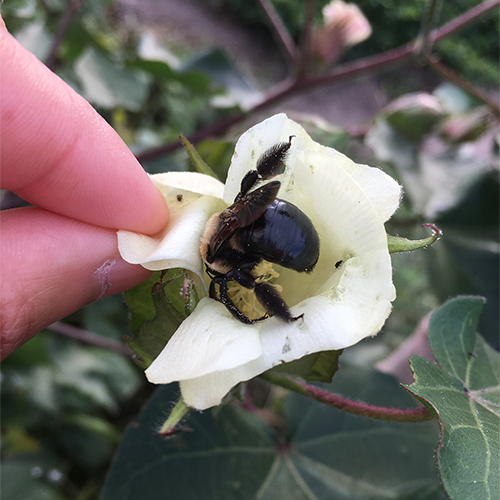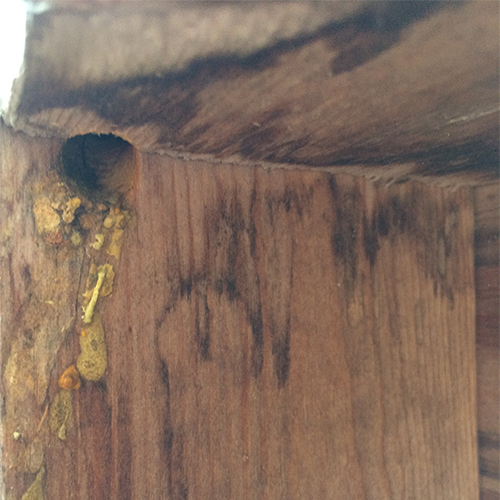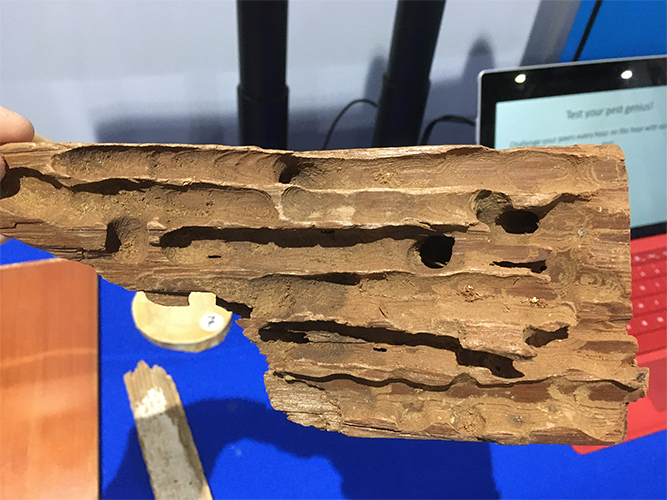By Kait Chapman, Extension Educator, Lancaster County
Although they may look like fuzzy bumble bees, the eastern carpenter bee (Xylocopa virginica) is more often a pest than a pollinator. Reports of these large bees damaging wood structures around homes and buildings have increased the past couple of years in Nebraska, so it’s important to know how to manage them.
Identification
The eastern carpenter bee is a large bee with coloration similar to bumble bees. But while bumble bees have completely hairy bodies, the carpenter bee’s abdomen is relatively hairless and a metallic-black color. During the summer, male carpenter bees will often aggressively fly towards people or other animals in their territory. But not to worry – only the female bees can sting, and they’re not aggressive. Males of this species can be identified by a patch of yellow or white hair on the front of their face.


Nesting and Damage
Carpenter bees tunnel into and along the grain of untreated wood where females dig nests, provision them with nectar and pollen, and rear up to nine larvae per tunnel. While carpenter bees are considered solitary, there can be several nests located in the same area, potentially compromising the structural integrity of wood. Be on the lookout for entrance holes that are approximately ½ inch in diameter.


Management
Preventing carpenter bees from nesting in wood with insecticide treatments is impractical. However, carpenter bees do not attack painted or treated wood as often and the use of passive traps constructed out of scrap wood and plastic bottles have also been shown to be an effective deterrent in the spring.
For existing nests, consider contacting a licensed applicator to inject an insecticidal dust containing the active ingredients permethrin or bifenthrin directly into the tunnel entrance. Wait several days before plugging entrance holes with caulk, wooden dowels or wood putty. Remember to always follow the pesticide label instructions.
Photos courtesy of Jody Green